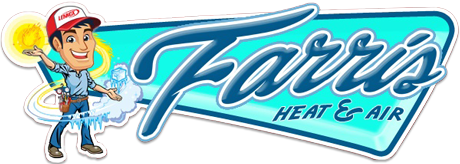We all like saving money on our monthly utility bills, but you should know there’s a way to keep costs down, even when you’re out of the house.
It starts with your thermostat. By making the most out of your thermostat, you can structure its daily schedule around your personal preferences. You can create a number of automated temperature settings for when you’re at home, away or even when you’re asleep.
By trying a few of these schedules, you have more time to enjoy pleasant temperatures while also keeping more of your money. Here are some ways your thermostat doesn’t have to use up all your summer spending money:
While at Home
Pretty much whenever you’re home, you want to enjoy a comfortable temperature. That’s why it’s best to set your thermostat lower in the summer while inside to make the most of the cool air.
But the ideal temperature for when you’re in your home during the summer is actually around 78 and 80 degrees Fahrenheit. With this adjustment, you can stay cool while still lowering your monthly energy bill.
While Gone
When it comes to setting the temperature for when you are out of the house in summer, it’s advantageous to set the thermostat higher than you would if you were in the house.
If your home is located somewhere a little cooler, you can set the temperature as high as 88 degrees while no one is home and then lower it back to the sweet spot of 78-80 degrees when you or a family member return. This way, your air conditioning system isn’t working around the clock to keep an empty house cool.
While Asleep
To enjoy a good night’s sleep during the summer, you want a nice cool temperature. A good rule of thumb is between 68-72 degrees Fahrenheit. This will keep you from getting too hot or too cold at some point overnight.
Other Strategies for Lowering Energy Use:
- Smart thermostat installation: Using a smart thermostat in the summer is an excellent way to reduce energy costs since it can plan your temperature adjustments according to your lifestyle and home environment. It’ll take care of making changes while you are home or sleeping, before allowing it to get warmer when no one is around. Using reputed brands and models such as the Lennox iComfort, you have the ability to remotely access and change the temperature through your smartphone, tablet or laptop. Scheduling smart thermostat installation in your Bartlesville home can be the simplest strategy for maintaining comfortable, yet energy-efficient temperatures even when you aren’t home.
- Update your existing HVAC system: Upgrading your HVAC system saves money right from the start. With greater energy efficiency, you can also count on lower utility bills since more efficient equipment requires less energy to heat and cool your home. Air conditioning installation in Bartlesville is only a phone call away, so don’t hesitate to reach out to local pros like Farris Heating & Air who can set you up for success.
- Schedule annual AC maintenance: Hiring a skilled professional to perform regular air conditioning maintenance in Bartlesville can have a big impact on your monthly energy use. With regular cleaning of the coils, checking for damage and clearing ventilation of dust and debris, this can help your HVAC system run more efficiently. More efficient operation reduces strain on key parts and lowers operational costs, resulting in lower energy usage and subsequently, smaller bills.
- Clean or replace the air filter on a regular basis: A regular schedule for cleaning or replacing the HVAC system’s air filter saves money by helping air flow efficiently through your air conditioner. When filters are clogged with dirt and debris, air conditioners have to work harder, and the strain can reduce the system’s life span and cause breakdowns.
- Check your attic insulation: Insulation is one of the key components in any energy-efficient home, keeping the hot air outside and the cool air inside over the summer. The North American Insulation Manufacturers Association (NAIMA) offers an official recommendation stating homeowners in souther states should have at least 13-14 inches of insulation, while those in northern U.S. states should have 16-18 inches.
- Inspect your ductwork: A leak in the air ducts could increase your energy bills much more than 20 percent, plus it can affect equipment such as your water heater, clothes dryer and other appliances throughout your home. Finding any leaks fast and sealing them can help with both these issues.
- Seal all other leaky spots in your home: Sealing leaky spots in your home with caulk, foam sealant or weather-stripping keeps temperatures a little cooler on hot summer days. Don’t forget to check for any gaps around windows, doors and even outdoor fixtures. Taking the time to seal up any leaks now can help you save a lot over time.
